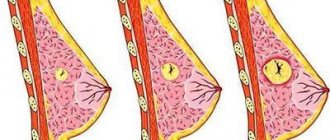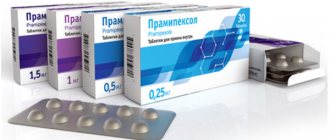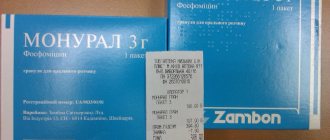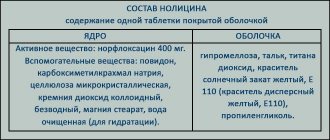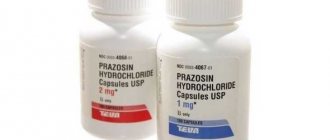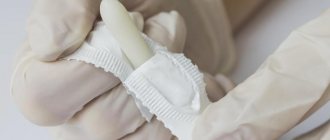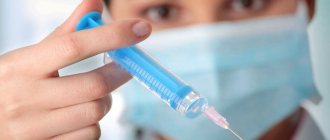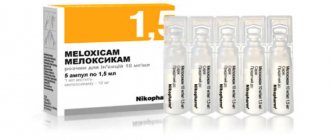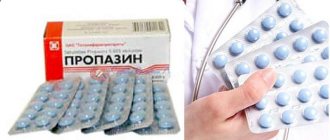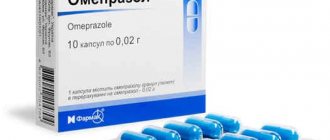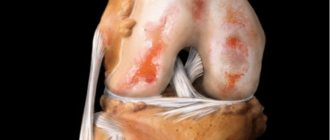Adriamycin (doxorubicin) - also known under the trade names Doxolik, Doxil, Rubex, Kelix, "Red Chemistry" - is a chemotherapy drug that disrupts the growth, development and division mechanisms of malignant cells. “Red chemistry” is indicated both in the early stages (as adjuvant chemotherapy) and for the treatment of metastatic breast cancer. Regular doxorubicin is used in combination with other anticancer drugs.
Doxorubicin is one of the anthracycline antibiotics, a cytostatic drug known since the late 1960s. Its solution is red in color - hence the name red chemotherapy for breast cancer .
Doxorubicin is obtained semisynthetically from the bacterium Streptomyces. The mechanism of action is blocking the activity of the enzyme topoisomerase-II. Having penetrated a malignant cell, the doxorubicin molecule is integrated into the DNA structure. As a result, the cell loses its ability to divide.
An unfavorable consequence of using doxorubicin is that it can cause the formation of free radicals. This, in turn, leads to damage to the cell membranes of healthy cells. Therefore, hair loss is often observed when using doxorubicin. Another more serious problem associated with the use of the drug is cardiotoxicity (high risk of developing cardiomyopathy, arrhythmia, acute and chronic heart failure).
Find out more: Does hair always fall out after chemotherapy?
“Red chemistry of breast cancer” In addition to doxorubicin, another anthracycline is used in the treatment of breast cancer - epirubicin . It is less toxic than doxorubicin. Chemotherapy regimens (for example, such as AC, EC, FAC, CAF, AT) containing these cytostatics are often called “red chemistry” by patients. This is due to the fact that when anthracyclines are diluted in a solution for infusion, it becomes intensely red.
How does Doxorubicin destroy tumor cells?
All chemotherapy drugs destroy cancer cells or suppress their proliferation, but they do this in different ways. Doxorubicin is an antitumor antibiotic with antiproliferative and antimitotic effects. Its antitumor effects are associated with the following mechanisms:
- The drug penetrates the DNA molecule, blocks its replication and protein synthesis.
- Doxorubicin inhibits the enzyme DNA topoisomerase II, which affects the spatial structure of DNA and plays an important role in the process of cell growth and division.
- Chemotherapy molecules are capable of oxidizing to form free radicals that damage the cancer cell.
All these effects apply not only to tumor cells, but also to healthy cells. Doxorubicin can cause serious side effects. We will talk about them below.
Overdose symptoms
What signs of overdose occur when using a large amount of Doxorubicin? The instructions for use state that an overdose of the drug in question can lead to toxic symptoms that manifest themselves in the digestive system, as well as severe myelosuppression. In addition, increased doses of this medication can quite easily cause acute heart disease.
There is no antidote to the drug Doxorubicin. In case of overdose, the victim is prescribed symptomatic therapy. He is also hospitalized and treated with antibacterial drugs.
What types of cancer can this drug be used for?
Doxorubicin is used for cancer of the breast, stomach, uterus, head and neck, kidney, liver, ovaries, and thyroid gland. It is also used to treat acute lymphoblastic and myeloblastic leukemia, bone sarcomas, Hodgkin and non-Hodgkin lymphomas, multiple myeloma, neuroblastoma, and soft tissue sarcoma.
Doxorubicin is usually prescribed in combination with other chemotherapy drugs that have different mechanisms of action. This increases the effectiveness of treatment.
Analogs
Structural analogues and drugs with a similar mechanism of action include the following substitutes:
- Doxorubicin-Teva;
- Doxorubicin Ebeve;
- Adrosal;
- Farmorubicin;
- Epilik;
- Epirubicin.
Before replacing, you should consult your doctor. It is prohibited to independently switch to another drug.
One of the analogues of the drug Epirubicin.
Course of treatment with Doxorubicin
Doxorubicin is administered intravenously in different ways:
- Through an IV.
- Using an infusion pump - for a long time at a certain speed.
- Through a central venous catheter installed, for example, in the subclavian vein.
- Through an infusion venous port system: a small reservoir is sutured under the skin, connected by a catheter to the subclavian vein. One of the walls of the reservoir is a membrane, it is located directly under the skin. The drug is injected into the reservoir by piercing the skin and membrane with a special needle. Typically, a patient is implanted with a port system when drugs need to be administered over a long period of time.
- Sometimes, for bladder cancer, Doxorubicin is injected directly into the bladder through a catheter.
The drug is not available in tablets and is not used.
IMPORTANT. Doxorubicin is a vesicant and has a strong blister effect. If you inject it into the subcutaneous fatty tissue, it will cause necrosis - tissue death. This is a serious complication; after unsuccessful administration of the drug, skin grafting may be required. Therefore, the procedure must be performed by specially trained medical workers, in compliance with all rules. If redness appears on the skin during administration, you should immediately inform your doctor or nurse.
Therapy can be carried out both in a hospital and on an outpatient basis. The dosage of Doxorubicin depends on the type of cancer, the patient’s weight and height, his state of health, and concomitant diseases. Treatment, as with other chemotherapy drugs, is carried out in cycles. After the administration of Doxorubicin, there should be a “respite” for several days - this is necessary so that the body can recover and no serious side effects arise. Then the cycle is repeated. The course may consist of several cycles and last several months.
Pharmacokinetics
After parenteral administration, the active substance begins to quickly distribute throughout the tissues and fluids of the body, reaching a maximum plasma concentration within a minute. In this case, the drug is not able to penetrate the blood-brain barrier, which is why it has no effect on the central nervous system.
The drug substance is transformed in the liver with the formation of metabolites. The half-life lasts from 30 to 40 hours, during which 40-50% of the drug leaves the body through the biliary tract, 5-10% is excreted through the kidneys.
Within 30 to 40 hours, 40-50% of the drug leaves the body through the biliary tract.
Possible side effects
Like any chemotherapy drugs, Doxorubicin damages DNA not only in tumor cells, but also in other actively reproducing cells. Because of this, it may cause some side effects.
But do not be alarmed if your doctor has prescribed this drug to you. Firstly, you will not immediately experience the entire list of side effects that we list below. Secondly, most of them are quite predictable in terms of time of onset, severity and duration. After completion of treatment, they gradually disappear. Thirdly, the side effects of Doxorubicin can be kept under control, and the European clinic has everything necessary for this.
Common side effects include: nausea and vomiting (beginning to occur approximately 2 weeks after starting treatment), pain at the injection site, hair loss, anemia and an increased risk of infection. More than a third of patients experience these symptoms. 10–30% of patients experience symptoms such as mouth ulcers, watery eyes, darkening of the skin at the site of radiation therapy, and red urine. Infertility occurs in 10% of cases in men and women.
Decreased immunity. When using Doxorubicin, the level of leukocytes in the blood decreases and the risk of infection increases. You should immediately inform your doctor about symptoms such as fever over 37.5 °C, sore throat, cough, loose stools, and frequent urination.
Increased bleeding. Occurs due to a decrease in platelet levels. It manifests itself in the form of hematomas (bruises) on the skin, bleeding gums, and nosebleeds. Some patients may require platelet transfusions.
Anemia. Chemotherapy with Doxorubicin can lead to a decrease in the level of red blood cells in the blood. There is pallor, a constant feeling of fatigue, headaches and dizziness, shortness of breath. Some patients require red blood cell transfusions.
Increased fatigue. This symptom worsens toward the end of chemotherapy and persists for several weeks after completion. At this time, you need to try to relax more and be in the fresh air.
Changes in the oral mucosa. The oral mucosa may become sensitive and painful, and sometimes ulcers appear on it. Increased risk of infection. In order to cope with these symptoms during treatment with Doxorubicin, you need to follow some recommendations:
- Use a soft toothbrush.
- Drink more fluids.
- Avoid eating foods that irritate the mucous membranes of your mouth.
- Stop drinking alcohol and smoking.
Decreased appetite. This is a common side effect of Doxorubicin and other chemotherapy drugs. If you eat very little for several days due to lack of appetite, consult your doctor.
Pink-red coloration of urine. Urine may change color within 48 hours after using the drug. There's nothing wrong with that. This is not blood, this symptom occurs because the Doxorubicin solution is red.
Diarrhea. If the stool becomes liquid, you should immediately consult a doctor. This symptom may be due to the drug affecting the intestines or an infection.
Hair loss. Hair may become thin or fall out completely, and not only on the head: many patients lose eyebrows and eyelashes. Most often this occurs after the first or second course of treatment with Doxorubicin. For many patients, this side effect seems the most terrible, but in fact there is no reason to panic. Typically, hair grows back soon after chemotherapy is completed. In order to protect them, special cooling caps are used during procedures.
Changes in skin and nails. Nails may become brittle, skin may become dry, become more sensitive to the sun, and dark spots may appear. Usually these symptoms are temporary.
Other side effects are possible, but these can usually be managed successfully. Doctor's recommendations and modern methods of supportive treatment help patients comfortably tolerate Doxorubicin chemotherapy.
Drug interactions
Doxorubicin may increase the toxicity of other antineoplastic agents, especially myelotoxicity and gastrointestinal toxicity.
When using doxorubicin and other cytotoxic drugs that have potential cardiotoxicity (for example, 5-fluorouracil and/or cyclophosphamide), careful monitoring of cardiac function is required throughout the course of therapy.
Against the background of doxorubicin, it is possible to increase the phenomena of hemorrhagic cystitis caused by cyclophosphamide and increase the hepatotoxicity of 6-mercaptopurine.
Streptozotocin increases the half-life of doxorubicin. Doxorubicin enhances radiation-induced toxic effects on the myocardium, mucous membranes, skin and liver. Uricosuric antigout drugs increase the risk of nephropathy.
Hepatotoxic drugs, by worsening liver function, can lead to increased toxicity of doxorubicin.
Doxorubicin should not be mixed with other drugs. Contact with alkaline solutions should not be allowed as this may lead to hydrolysis of doxorubicin. Pharmaceutically incompatible with heparin, dexamethasone, hydrocortisone, sodium succinate, aminophylline, cephalothin, 5-fluorouracil and other antitumor drugs.
When taken simultaneously with live viral vaccines, it is possible to intensify the replication process of the vaccine virus, increase its side/adverse effects and/or reduce the production of antibodies in the patient’s body in response to the vaccine.
Rare dangerous side effects
An extremely rare but very serious side effect of Doxorubicin is a decrease in the pumping function of the heart. The risks are increased in elderly patients, people receiving radiation therapy to the chest area, and taking other drugs with cardiotoxic effects. Heart problems may occur several years after treatment has been completed. Before starting a course of chemotherapy, the doctor must prescribe an ultrasound and other tests and monitor the patient’s heart condition during the treatment process.
Sometimes tumor decay syndrome occurs - a condition when, under the influence of the drug, many tumor cells die, and the products of their destruction enter the blood. Symptoms appear within 24–48 hours after administration of the drug, and kidney failure may occur. To prevent this complication, infusion therapy is prescribed.
Another extremely rare complication is leukemia. It may occur several years after treatment.
Contraindications for use
The following drugs should not be used with doxorubicin:
- Gilotrif (afatinib)
- Erleada (apalutamide)
- Padaxa (dabigatran)
- Visimpro (dacomitinib)
- Deferiprone
- Lixiana (edoxaban)
- Balversa (erdafitinib)
- Zydelig (idelalisib)
- Sporanox (itraconazole)
- Serzone (nefazodone)
- Ofyev (nintedanib)
- Kepivanse (palifermin)
- Pomalidomide)
- Epclusa (sofosbuvir)
- Tofacitinib
- Herceptin (trastuzumab)
In the following conditions, the use of doxorubicin is unacceptable:
- Serious liver disease
- Severe heart failure
- Recent myocardial infarction (last four to six weeks)
- Severe myelosuppression (significant decrease in white blood cells and platelets in the blood)
- Pregnancy
Why is Doxorubicin a “red” chemotherapy?
Colonies of microorganisms Streptomyces peucetius, which produce anthracyclines, have a characteristic red color. The medicine in the bottle is of a similar color. That's why women undergoing treatment for breast cancer call this chemotherapy "red."
“Red” chemotherapy is feared because it causes more severe side effects than “white,” “yellow,” and “blue” drugs. But there is no reason to be afraid: before prescribing a medicine, the doctor will thoroughly assess the patient’s health, weigh the pros and cons, prescribe supportive therapy and will constantly monitor the condition during the treatment process. Patients of the European Clinic tolerate any chemotherapy comfortably - this is one of the most important principles of our work.
Release form
The lyophilisate is a yellow-red porous mass, possible forms of release:
- 10 mg of this mass in a bottle; ten bottles in a cardboard box.
The concentrate is a transparent red liquid, possible forms of release:
- 5 ml of this solution in a glass bottle; one or ten bottles in a cardboard box;
- 25 ml of this solution in a glass bottle; one bottle in a cardboard box;
- 50 ml of this solution in a glass bottle; one bottle in a cardboard box.
How is the patient's condition monitored during treatment?
Before prescribing Doxorubicin, general and biochemical blood tests are performed, the condition of the kidneys, liver, and heart is assessed. The tests are repeated during and after the course of chemotherapy. If you are bothered by any symptoms, you should immediately tell your doctor about them.
Sometimes Doxorubicin has to be stopped due to side effects, in which case the doctor will select another drug. In the European clinic, you can create a “molecular portrait” of the tumor and select the optimal combination of chemotherapy drugs, prescribing personalized chemotherapy that will be most effective for a particular patient.
Due to the pronounced side effects, many patients perceive Doxorubicin as a “powerful” chemotherapy drug. But resistance to it sometimes develops—the tumor becomes resistant and no longer responds to treatment. In such cases, other drugs are prescribed.
Reviews
At one time I underwent several courses of chemotherapy. It had a partial effect. The doctor suggested changing tactics and trying the drug Doxorubicin. Of course, I doubted it for some time after reading the instructions carefully. It talked about the drug Doxorubicin, the side effects of which could have appeared in me due to chemotherapy. I was under the supervision of specialists around the clock, since the treatment was started very carefully and the slightest change in condition was recorded. And I can say that the drug helped me a lot, therapy with its help did its job.
Artem
The oncologist prescribed me Doxorubicin, the price of which was high, but the effect was good. I did not regret starting treatment. I have already completed several courses. I hope you will be able to completely overcome the disease.
Marina
When I was prescribed this drug for treatment, I tried to find as much information about it as possible, for example, on the Internet. Doxorubicin, reviews of the use of which did not raise any doubts, seems to have approached as correctly as possible in my case. I didn’t want to use analogues, so I decided to use the original. The effect was positive, the effect appeared after the first course of treatment.
Anna
Doxorubicin
Pregnancy and Fertility
The drug is dangerous for the fetus, therefore it is impossible for a woman to become pregnant during treatment with Doxorubicin and for at least 6 months before and after completion of the course. You can have sex during chemotherapy, but you must use effective contraception. The drug passes into breast milk, so breastfeeding is also contraindicated.
After using Doxorubicin, problems with conceiving a child may occur. 10% of patients develop infertility. Therefore, if the patient plans to have children in the future, this issue should be discussed with the doctor in advance. A chemotherapy doctor may recommend sperm cryopreservation for a man and egg cryopreservation for a woman.
Book a consultation 24 hours a day
+7+7+78
Doxorubicin price, where to buy
The average price of Doxorubicin in Russia is 110-193 rubles per 5 ml of the drug, and buying Doxorubicin in Moscow may cost a little more.
- Online pharmacies in RussiaRussia
- Online pharmacies in UkraineUkraine
LuxPharma* special offer
- Kelix (Doxorubicin) 2mg/ml 10ml
RUB 38,000 order - Doxorubicin Ebewe/Medak (Germany) 2 mg/ml vial. 5 ml (10 mg)
1580 rub. order
- Doxorubicin Ebewe (Austria)/Medak (Germany) 2 mg/ml vial. 25 ml (50 mg)
RUR 3,480 order
show more
Pharmacy24
- Doxorubicin Amaksa 2mg/ml 75ml solution Cell Pharm GmbH, Nimechchina
1287 UAH.order - Doxorubicin Medak 50 mg 25 ml N1 concentrate Medak Gesellschaft für Klinische Spetsialpreparat MBH, Nimečchina
491 UAH order
- Doxorubicin 10 mg N1 powder Sindan Pharma SRL, Rumunia
210 UAH. order
- Doxorubicin-Vista 10 mg 5 ml (10 mg/5 ml) No. 1 concentrate
210 UAH. order
- Doxorubicin Amaksa 2 mg/ml 5 ml bottle No. 1 in/pack. solution for injection Cell Pharm GmbH, Nimechchina
155 UAH order
